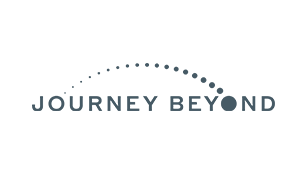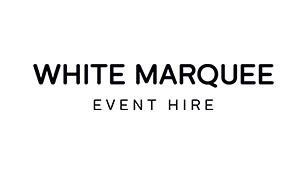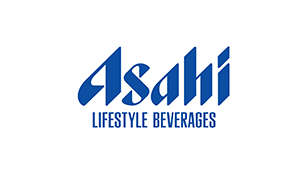Welcome
Congratulations on your successful associated event application. We’re excited to work with you on Tasting Australia presented by Journey Beyond in 2025.
For more than two decades this celebration of eating and drinking has served up innovative events and indulgent adventures. It’s the perfect platform to share your story with foodies and event-goers – and to keep them coming back.
Below you’ll find a range of resources to help market your associated event. We encourage you to use these tools to promote your involvement in the festival.
Tasting Australia Brand Assets
Tasting Australia Logo
Associated event holders have the benefit of using the Tasting Australia trademark and logo to market their event. These can be utilised across marketing collateral and digital assets.
Please refer to the Tasting Australia presented by Journey Beyond logo style guide for more information on the logo and its application (page 5-8). As Journey Beyond is the presenting partner for Tasting Australia, the logo must always appear with 'presented by Journey Beyond' locked up.
Ensure all marketing collateral and digital assets featuring the Tasting Australia presented by Journey Beyond logo are sent to Madeline Burke ([email protected]) for approval at least five working days before distribution.
Social Media Templates
Use the Tasting Australia Canva social templates to create bespoke social media assets. Download the Canvas templates here, including feed and story sizes.
How to use the Canva templates?
- Download the Tasting Australia feed and story templates. You will be prompted to create a free Canva account.
- Add or upload your own photos or videos.
- Replace the existing text fields with your event name and date. Please use the same naming convention as approved/listed on the website. If your event name is too long, please use a condensed version for social assets.
- Download or print your design by clicking on Share.
Register your event on ATDW
Associated event holders are encouraged to register and list their event on the Australian Tourism Data Warehouse (ATDW). It’s quick, easy and free to use.
By listing a product on the ATDW database you will have the opportunity to be promoted on some of the 250+ tourism related websites that share ATDW information, including southaustralia.com, australia.com and regional sites.
Visit the ATDW Support and Marketing Hub to get started.
How to Australian Tourism Data Warehouse works?
- Register on ATDW
- Create ATDW listing
- Listing appears on southaustralia.com
- Listing visible for promotion
- ATDW leads
DIGITAL & SOCIAL
Promoting your event through your social media channels can be an effective way to generate interest and drive ticket sales. The Social Media 101 guide offers tips and tricks for making the most of your social media channels. Try these practical suggestions:
- Engage immediately—Your audience's attention span is short, so it's crucial to captivate them right away. Use eye-catching visuals and compelling captions to draw them in within the first few seconds.
- Prioritise vertical format—As Instagram and other platforms continue to prioritise video content, especially in vertical formats like Reels, it’s essential to adapt your content accordingly. Use a 4:5 aspect ratio for photos and a 9:16 aspect ratio for videos to ensure your posts are optimised for maximum visibility and engagement.
- Include a call to action (CTA)—Never miss an opportunity to direct your audience to take action. Make sure your CTA is clear and easy to follow. On Instagram, for example, you might say, “Book tickets at the link in our bio”. On Facebook, include a ticket link directly in your posts to make it easy for followers to take the next step.
- Create shareable content—Content that resonates with your audience is more likely to be shared, which can significantly expand your reach. Think about what would make someone want to share your post. By focusing on creating shareable content, brands can increase their visibility and engagement.
- Share to Instagram stories—Instagram Stories are an excellent way to keep your audience engaged. Share behind-the-scenes content, countdowns to your event, and include a link sticker to purchase tickets. Stories are also a great place to share user-generated content, boosting community engagement.
- Collaborate, or encourage stakeholders to share your content—Leverage the networks of your event partners, venues, and talent by collaborating on social media posts. You can invite them as co-collaborators on platforms like Instagram, or simply encourage them to share your content with their followers.
- Leverage the brand—Download Tasting Australia social assets for feed and stories to leverage the Tasting Australia brand.
Don’t forget to tag @tastingaustralia and use the #TastingAustralia hashtag in your posts!
Do you have an email database? Use it to promote your Tasting Australia event! If you have held events in the past, you might also have access to ticket buyers’ data to retarget. It is important to check that they have opted in to receive ongoing communications from you. Consider:
- Engaging imagery is the hero—Use a compelling image that draws attention and accurately represents your event.
- Use clear, consistent language—Use copy that clearly demonstrates the value proposition of your event. Keep your copy short and functional – between 30 and 70 words – and include information such as venue, date, ticket price and a link to purchase tickets.
- Utilise event partners—Reach out to your event partners to see if they have email databases you can leverage. If they’re able to, provide them with assets to share through these networks.
Ensure your website has a click-through (banner, tile or link in navigation) to your event on the Tasting Australia website. This should be easily accessible via your homepage, navigation or events / what’s on page. Download the Tasting Australia logo to include on your website and leverage the festival brand.
PUBLIC RELATIONS
Download the PR 101 guide for tips & tricks on how you can leverage PR for your event.
Public relations (PR) is managing how others see, feel and interact with your brand or company.
- PR is about increasing brand awareness through editorial media placements, storytelling, influencer marketing, collaborations and events
- It is used to enhance, protect or build reputations of brands and individuals through storytelling and third-party channels
- PR is about persuading and enticing external (or sometimes internal!) audiences to perceive your brand the way you want to be portrayed
To ensure consistency in your brand and control over how the public perceive your event, develop key messages that align to your brand positioning. These will allow journalists to clearly understand the event.
- What is your unique selling point?
- Have you brought in notable national or international talent?
- Does your event have a sustainability angle?
- Are you collaborating with other venues and/or South Australian businesses?
You can secure earned media through the following avenues:
- Media releases—Write and develop a media release that has newsworthy elements to tell your brand story. You can distribute it by working with a PR agency to create a media list or use your own contacts to create one. When putting your list together, consider how relevant the journalists’ publication is to your event.
- Familiarisations—A great way to appeal to journalists is to offer a pre-event familiarisation visit. It’s important to remember that just because a journalist accepts a famil, they are not necessarily obliged to write about it.
- Host media or influencers—Hosting media and influencers is all about telling your story and showcasing the very best of your event. Ensuring these stakeholders have a positive experience is paramount to receiving positive exposure.
USE YOUR NETWORKS
We recommend promoting your event through your venue to raise awareness and build interest with your existing customer base. Our suggestions:
- Put up posters in your venue—Download the Tasting Australia brand assets to use across your marketing collateral.
- Does your venue have a PR manager or agency? Ensure they are informed.
- Promote the event via your venue’s website and social media. Use our social media templates to create bespoke assets (feed and story sizes)
- Include your event in your email marketing communications with a link to purchase tickets.
- Share the event with your team, friends and family so they can spread the word.
Contact your local regional tourism organisation for support and suggestions on how to engage your local community. They may have marketing activities promoting events in the region, or useful contacts for you to collaborate with.
Are you engaging chefs, winemakers, producers, or other businesses? Provide them with your event collateral and social media assets and encourage them to share these through their own networks.
DURING YOUR EVENT
Share your event to your social channels. Instagram or Facebook stories are great tools to share the day as it unfolds with short-form video content. Encourage your guests to share their experience on social media too – you might include social media details on your menus or create a branded backdrop where people can take and share photos.
Don’t forget to tag @tastingaustralia and use the #TastingAustralia hashtag in your posts and stories!
If you are considering holding an event again in future years, this is a great opportunity to capture images for future promotion. Use our photography guidelines to help formulate your brief:
- Invite the viewer in—Unexpected angles and first-person perspectives engage and evoke a sense of curiosity.
- Appeal to the senses—Food should appear fresh, generous and enticing with flavours and aromas that leap off the page and through the screen.
- Express energy—Celebrate the magic of the moment by capturing dynamic action and movement.
- Amplify atmosphere—Showcase the unique and immersive nature of your event, highlighting distinctly South Australian settings as a backdrop where possible.
What we want
- Evoke a sense of curiosity
- Movement and theatrical moments—fire, smoke, flipping, pouring sauce
- Consideration given to background—can destination be included to provide a sense of place?
- Bring the story to life with human elements—capture a range of people including chefs, producers, guests immersed in experiences
- Authentic / candid moments and personality
- Look to feature people, produce and place in one image
What we don’t want
- Rubber gloves and plastic sauce bottles
- Production line of plates
- Cluttered backgrounds, and messy or empty tables
- People looking direct to camera
- Posed, staged or contrived imagery
- People looking bored or disengaged





















